Tear down this wall: Why Sydney’s boys and girls’ schools are merging
Sydney is home to many prominent single-sex schools, but slowly the walls are coming down, in some cases literally, and boys and girls are about to learn together.
Education
Don't miss out on the headlines from Education. Followed categories will be added to My News.
Next month, a Randwick high school will host the eastern suburbs’ version of the fall of the Berlin Wall.
Dubbed ‘Fence Day’, on December 17 students, teachers and families will celebrate as they tear down the literal fence that divides the former Randwick Boys’ and Randwick Girls’ High School campuses as the two merge to become one school in 2025.
New principal Belinda Conway begins her tenure both with a mandate – Year 7 enrolments are up by almost 40 per cent for 2025, and the school’s total population will increase by around 90 students – and a cultural challenge, after 42 per cent of current students and parents on the girls’ campus declared merging the two would be “completely unacceptable”.
The results of the Department of Education’s consultation surveys both in Randwick and other suburbs slated for school mergers belie the generational divide – while the schools’ existing communities often oppose or are neutral on the issue, parents at primary “feeder” schools and local childcare centres are calling for more co-ed options for their own kids.
Increasing demand for coeducation is sweeping across Sydney and some experts believe the days of dividing secondary students by sex are numbered – especially for boys-only institutions.
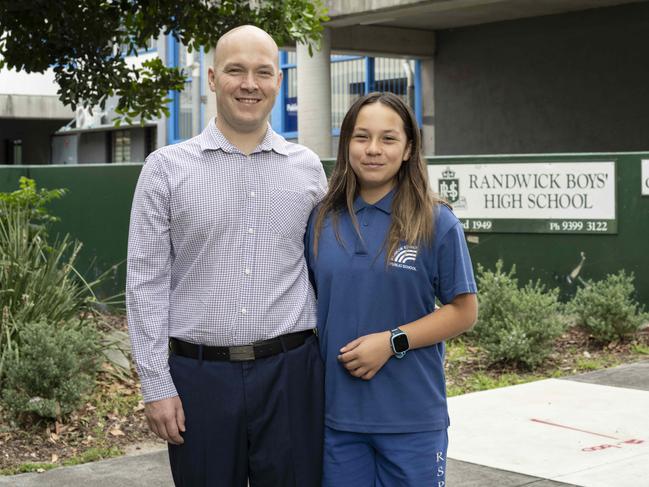
Of 19 Sydney schools both public and private that have merged or gone co-ed in the last decade – or are imminently planning to do so – 14 were boys’ schools prior.
University of Sydney education researcher Dr Kellie Burns said many families view coeducation as “the way of the future” but while parents’ preferences have broadly shifted towards mixed-gender schooling, boys’ schools are experiencing the effects more strongly than girls’ schools which have long converged around a feminist philosophy.
“The movement to increase girls’ achievement from the 1980s onwards was really quite a successful movement … and it became the sales pitch of a lot of all-girls schools,” she said.
“A lot of parents have bought into that and feel invested in that idea … and at the same time there’s been concerns raised about the way in which boys’ schools perpetuate certain masculine norms that are far less acceptable now.”
Boys’ schools have comparatively fewer voices proactively spruiking their philosophy however in a recent letter to families, one of their more outspoken advocates – headmaster of Trinity Grammar School in Sydney’s inner west Tim Bowden – pushed back on the “perception … that the tide is running against single-sex boys’ schools”.
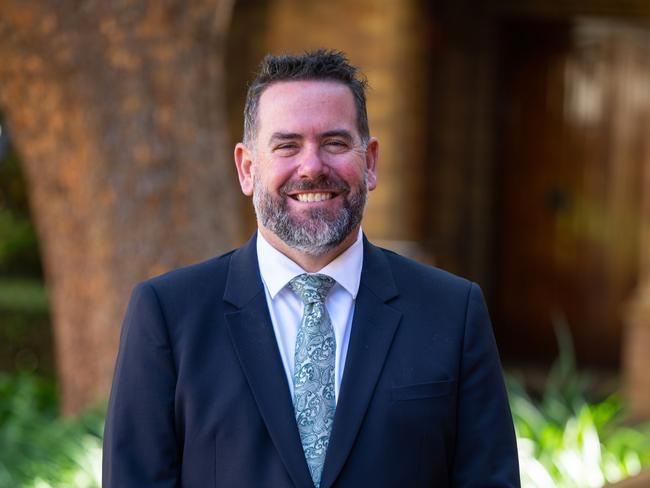
Citing New Zealand-based research by the International Boys School Coalition that found boys perform better in single-sex schools over co-ed ones, Mr Bowden called for the negativity towards boys’ schools to be “challenged”.
“The finding of the research was unequivocal and consistent in every outcome and in every cut of the data,” he wrote.
“If boys do better in boys’ schools, perhaps instead of eliminating them, decision-makers should be making a stronger commitment to ensure that the boys’ schools are as good as they can be.”
Phillip Heath, headmaster of Barker College – which has historically enrolled both genders from Year 10 but transitioned fully to coeducation in 2019 – is a staunch advocate for diversity of school choice but found the case to remain predominantly a boys’ school “did not stack up”.

Five years ago the north shore did not have a Kindergarten to Year 12 coeducational private school, he said, and for many smaller schools there is “an economic reality” that sees transitioning to co-ed or amalgamating male and female campuses used as a “survival strategy”.
“We looked into the research globally and locally and found no statistically significant differences in performance where gender was the driver,” Mr Heath said.
“I have huge respect for tradition and heritage, but there is no future in the past.”
Meanwhile Reddam House, one of the state’s very few financially independent for-profit schools, has seen where the educational market is headed and has spent $175 million expanding into Sydney’s north shore, with a new campus to open in time for the 2025 school year. Five hundred or so families are set to enrol at Redddam House North Shore.
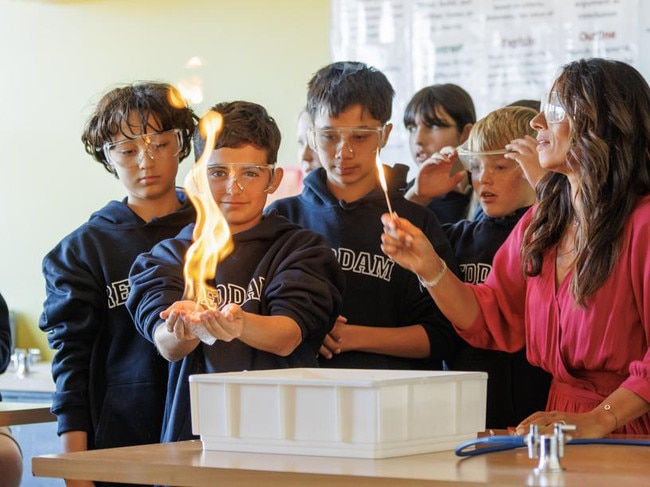
Dave Pitcairn, principal of both the North Sydney and original eastern suburbs locations, said between 25 and 30 per cent of incoming students are transferring over from single-sex schools.
Mr Pitcairn is himself a convert to coeducation, having been a “huge proponent of boys’ schools” prior to a worldview-shattering classroom experience as a science teacher in a South African boys’ school.
“I was teaching Year 12 physics to the top set, the smartest boys at this elite private school and I asked the boys two questions – I asked them how many of them thought their mothers were cleverer than their fathers,” he recounted.
“The law of averages would suggest it should be about 50/50, but only one boy in this class of 26 thought that maybe his mum might be smarter than his dad – and I knew for a fact there were multiple mums that had more high-powered jobs than their fathers.
“The delusion that they are smarter (than girls) was apparent to me, and I just thought, ‘you guys have got no idea how wrong you are’.”
The fact that many historically all-boys schools in Sydney, from Cranbrook to Newington College, are now enrolling girls “doesn’t surprise me at all”, he said.
“Parents have become more progressive, and parents have realised that there’s an alternative.”
Jess Yustantio and partner Kenrick Setiobudi have daughters Kimberley, 5 and Victoria, 2 and a half and Kimberley will be enrolled in Reddam House North Shore.
The inner west couple both attended same-sex schools in their own youth but will make the trek to North Sydney for their kids after meeting and being impressed by the “bright” alumni from Reddam House.
Their single-sex Catholic school upbringings produced boys who were socially anxious when interacting with girls and vice versa, Ms Yustantio said.
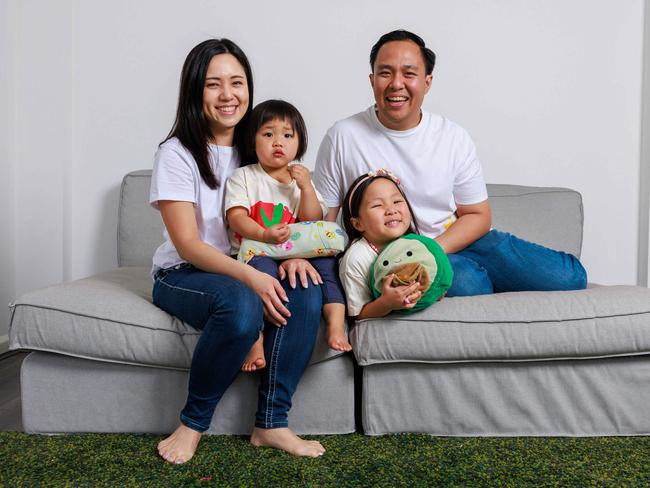
When Ms Yustantio attended Santa Sabina College as a girl, students visited St Joseph’s College in Hunters Hill for language lessons “but when we came into the school grounds, the boys got overly excited – they would say ‘girls, girls!’”
“There’s clearly a difference in what happens later on when the school gates are open,” she said.
Soon-to-be Randwick High School dad Morgan Jolly and his daughter Saskia, who finishes primary school at Rainbow Street Public School next door this year, are thrilled by the $42 million merger they’re about to be the guinea pigs for.
“The key thing that made us really excited to go to Randwick was the growth and the money being invested in the school,” Mr Jolly said.
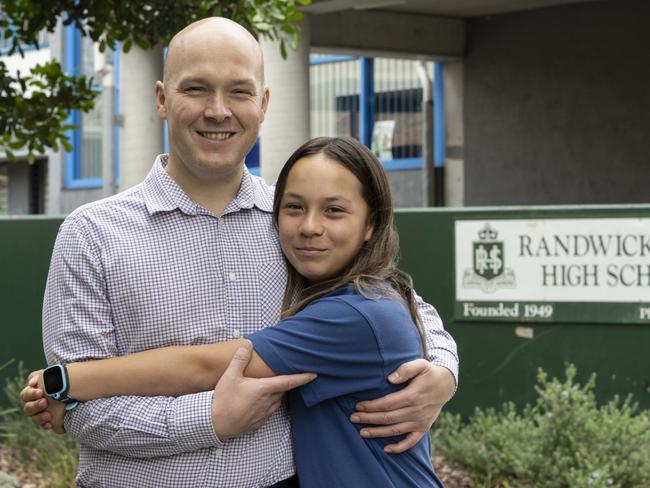
Raised in small-town Canada where co-ed schools are the norm Mr Jolly was bewildered by the popularity of single-sex, private education in Sydney – “seeing this kind of separation I was confused by it”, he said.
Current Randwick Girls’ parent and Queenslander Kathi Spinks was also “a bit mystified” by the dominance of single-sex schools.
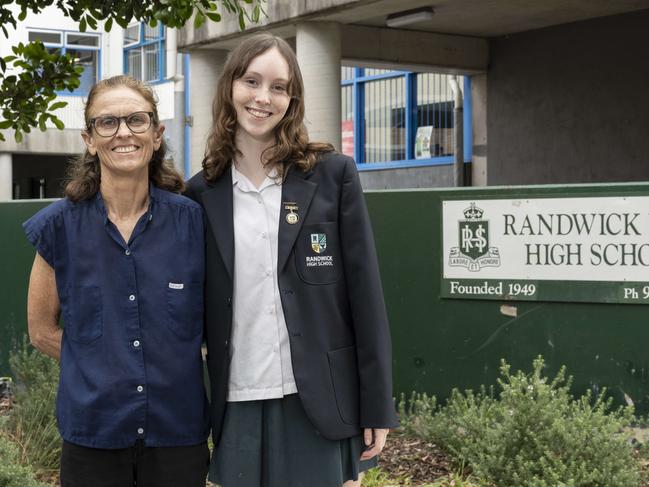
Both she and her daughter Ursela O’Sullivan are happy with the changes at Randwick, with Ursela staying on for Year 12 to become the merged school’s female captain.
“When I look at this site, and the schools are basically next to each other, it just makes sense that they merge,” Ms Spinks said.
“They’re going to be this enormous state-of-the-art campus, they’ll be able to share all the facilities, have great teachers and a varied curriculum.”





